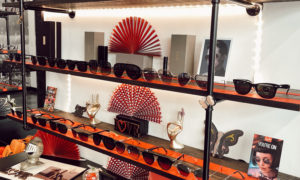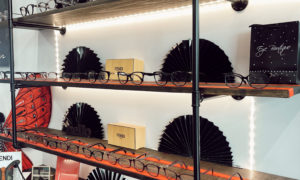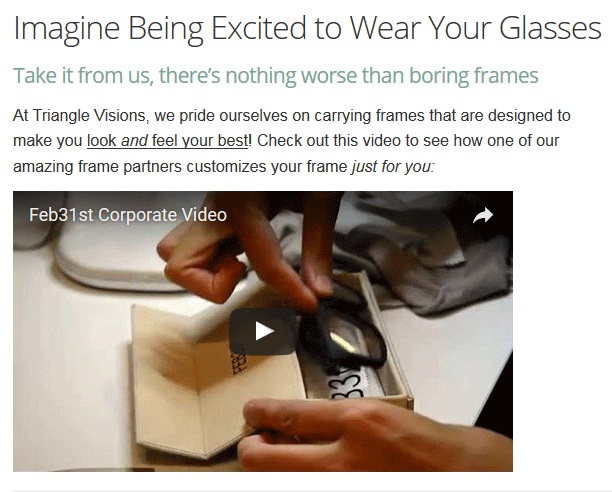
Millennials are accustomed to watching videos, so offering an educational video like this one, on Dr. Lyerly’s site, can be an effective way of reaching out.
Jennifer Lyerly, OD
March 15, 2017
Millennials, those born between 1982 and 2002, are now the biggest segment of the population. If you want to reach them, and then prescribe products that meet their needs, you need to know the conversations to have in the exam room with them, including many of these individuals’ most common needs.
I am an associate doctor at Triangle Visions Optometry in Cary, N.C. It is a family private practice, where 36.3 percent of the patient base are Millennials aged 15-35. I’m a Millennial myself, and my staff is almost entirely Millennials, age 25-37, so we know from first-hand experience the kind of office environment that is likely to appeal to people our age.
At our practice, we have instituted a plan to connect with Millennials and accommodate their needs–because we recognize that this age cohort is absolutely essential to the future of our practice. This is the group now having children, beginning families and establishing patterns of healthcare. Calculate their value to the practice over time, and it’s a no-brainer that this is a group to court.
To reach Millennials, we connect conversations about vision and eye health to real-life experiences that spotlight conditions we can improve, and needs we can meet.
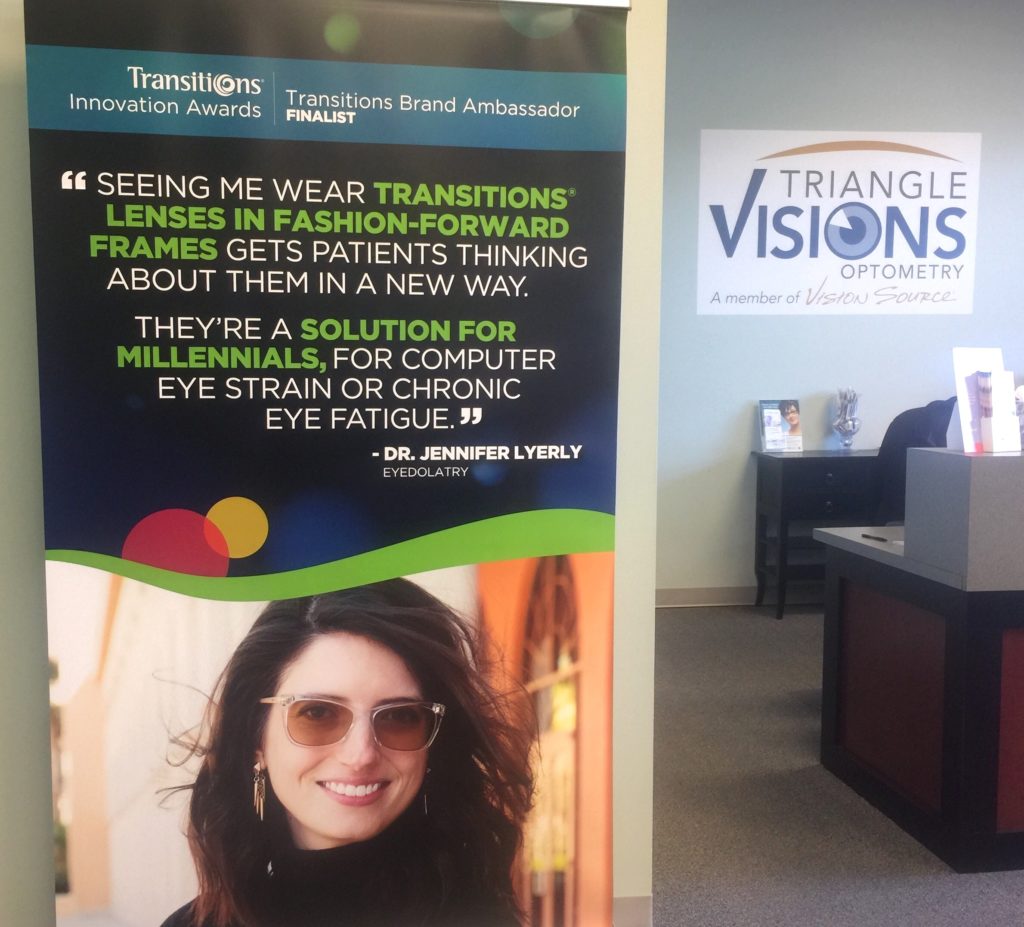
Dr. Lyerly, herself a Millennial, features marketing pieces in her office underscoring her own use of optical products, along with information for patients on why they should also try the products.
Ask About Discomfort & Discuss Digital Eye Strain
The biggest complaint I hear all day from Millennial patients is they have eye strain: some form of headaches, pain around their eyes or blurry vision. They often come in complaining of distance blur, but will have basically no prescription with refraction (+/-0.25 or so).
The challenge is turning the conversation to what’s really going on. They have great eyesight, even though that’s the complaint they came in with. What’s bothering their vision is a combination of accommodative and vergence issues, dry eye from poor blink rates and digital eye strain from prolonged computer and device use. It’s a conversation that can take much longer than your traditional eye exam because traditional glasses and contact lens wear won’t help; it’s all about prescribing lifestyle changes.
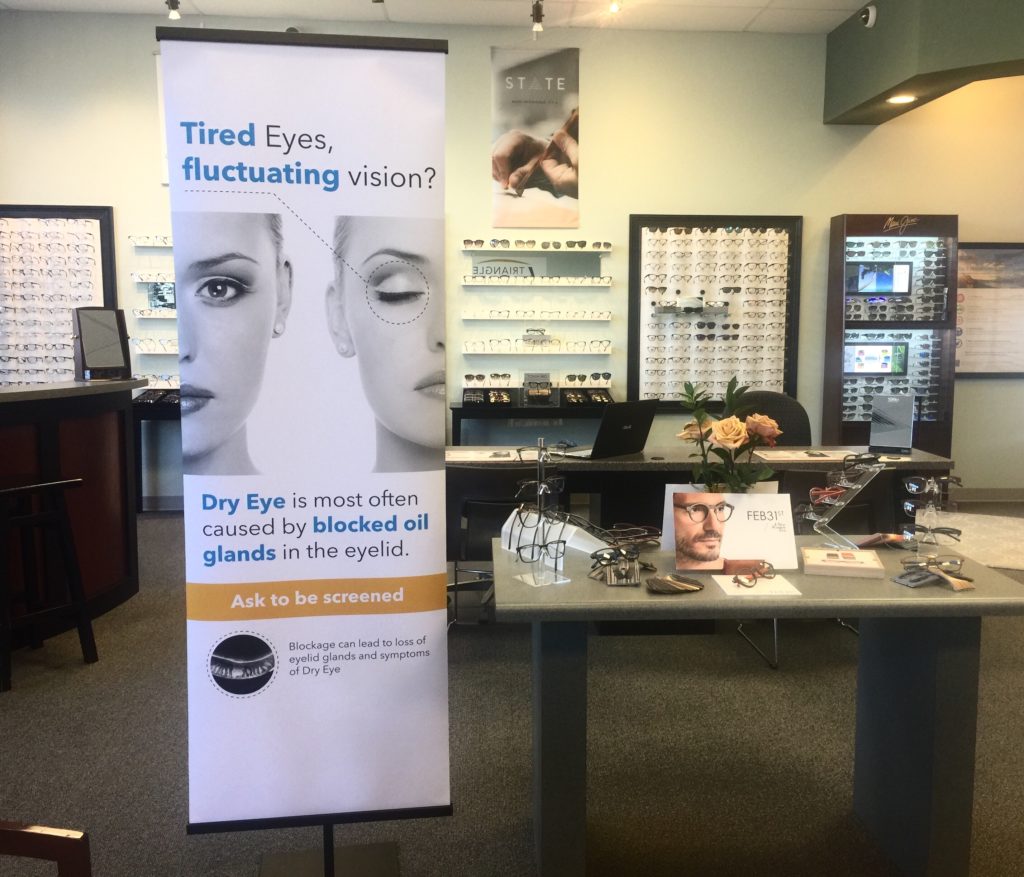
Dr. Lyerly talks with all her patients, including Millennials, about how their eyes can get tired from digital device use, and presents educational posters and materials in her office.
Two Common Questions–and Two Good Solutions
PATIENT: “You say my vision is perfect, but why can’t I see clearly driving home at night?”
OD: “Your eyes see perfect for distance vision, but they are too tired after the challenging day you just had staring at the computer to perform their best. It’s like they just completed a marathon. If all you did all day long was hang out at the beach, or go for a walk, you would feel like you had great vision. But your day is a lot tougher than that, and nobody’s eyes could do what yours are being asked to do and still perform perfectly. We have to combat your eye fatigue for you to see clearly by the time you leave the office and drive home.”
PATIENT: “If my eyes are dry, why do they water?”
OD: “Your eyes are doing a lot of screen time. Your job has you on the computer for most of your work day, and the average Millennial spends another 3.2 hours a day on their smartphone. Studies show we blink about 50 percent less often when looking at digital devices. Blinking is how our eye stays hydrated; it causes the glands that run up and down in our eyelid to release the tear film and keep our eye from drying out. If we aren’t blinking, the tear film isn’t getting to the eye, and the body is left with two bad choices: 1) it can let your eye dry out which causes blurry vision, or 2) it can water. When your eye is watering it’s telling you that you’ve entered a danger zone by not blinking often enough. Listen to what your body is telling you and blink!”
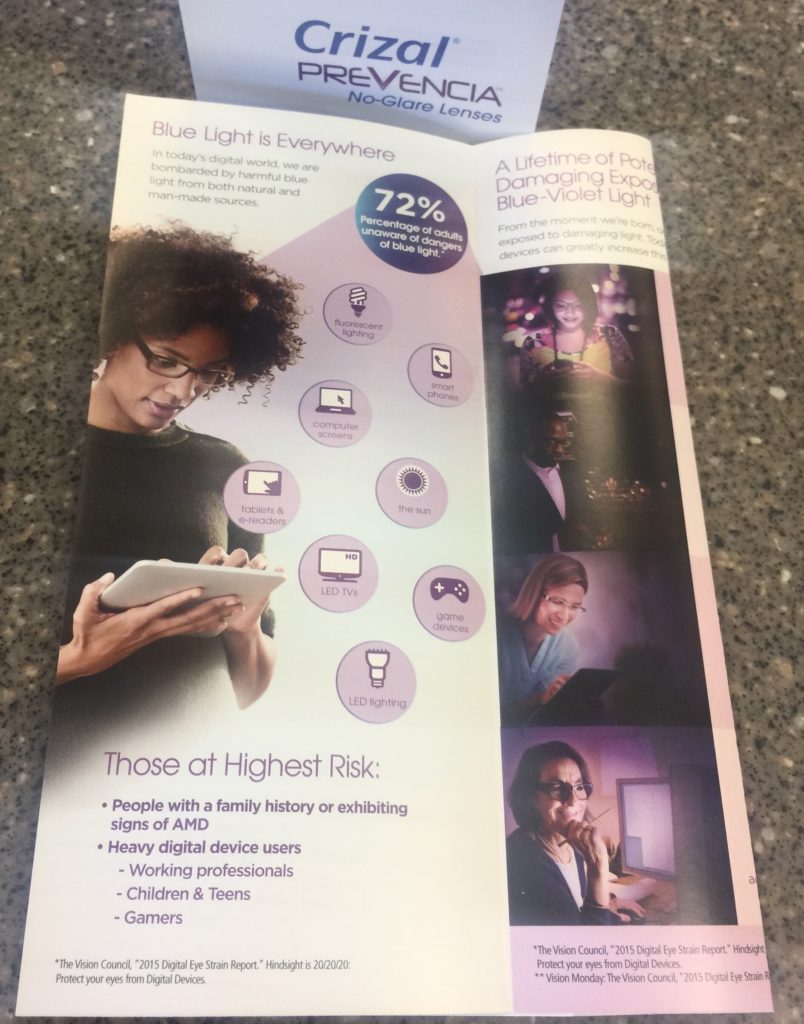
Dr. Lyerly educates Millennials, and all patients, about the potential for blue light from digital devices to damage eyes, and offers educational materials in her office about it.
Relieve Discomfort, Solve Problems
For eyewear, I measure accommodative facility and phorias on every single patient, but I’ve found it’s especially important in Millennials. If a patient shows accommodative dysfunction, I recommend anti-fatigue glasses like Shamir Relax, so that their eyes don’t have to work as hard when they look down at a smartphone or tablet.
The low powered plus is easy to adapt to without any peripheral vision distortion. If a patient also shows convergence issues, I’ll also trial low prism (0.5 over both eyes) to see if that achieves any additional relief.
Here is a conversation I might have with a patient:
PATIENT: “My eyes have been feeling tired lately.”
OD: “Many of my other patients have experienced the same, and do great with Shamir Relax lenses, which can make using your computer and other digital devices easier.”
One of the essential components of my glasses prescription is prescribing for ocular comfort. I always recommend a glare coating, but if tired eyes is a specific complaint, a blue blocker glare coating like Crizal Prevencia is a great option. I also discuss the advantages that blue-blocker glare coatings like Prevencia give for night driving.
Here is how the conversation might go:
PATIENT: “I don’t know if it’s my imagination, but the light from my computer sometimes bothers me. I’m getting headaches, and sometimes even have to turn the lights around me off.”
OD: “Light sensitivity is another common computer use complaint. Many of my other patients, like you, are working under fluorescent lighting, looking at brightly lit screens for hours at a time. I’ve found glare coatings like Crizal Prevencia and a light tint like Transitions XTRActive really improves performance in their glasses. The lens always has a low tint to take the edge off overhead fluorescent lighting and screen brightness, but darkens fully when you step outside for lunch or errands to keep your eyes comfortable. Transitions XTRActive also has a 32 percent blue blocking effect on their own, which is an added advantage against fighting fatigue.”
I might also have the following conversation with a contact lens patient:
PATIENT: “My eyes are getting tired earlier in the day, and my contacts are getting dry, so that by 3 p.m. or 4 p.m., I feel like taking them out.”
OD: “You’re not alone. Many of my contact lens patients, like yourself, with accommodative issues diagnosed during their refraction, can benefit from a contact lens like the new Biofinity Energys. It’s aspheric design is perfect to relieve that near work eyestrain, without causing any distance blur complaints associated with multifocal contact lenses. I’ve been having great success in my office with this lens!”
For patients with poor blink rates and dry eye, I turn to premium daily disposable lenses to give my patients the best possible comfort. Lenses like Dailies Total 1, MyDay, and the new Acuvue Oasys 1 Day, are on high rotation.
 Jennifer Lyerly, OD, is an associate at Triangle Visions Optometry in Cary, N.C. To contact her: jelyerly@gmail.com
Jennifer Lyerly, OD, is an associate at Triangle Visions Optometry in Cary, N.C. To contact her: jelyerly@gmail.com

